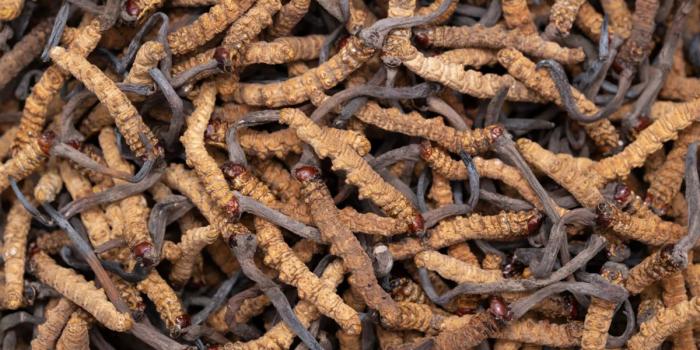Imagine this: the most fascinating symbol of love you may come across could be a wedding ring made from the unusual Cordyceps sinensis, also known as the zombie fungus.
Unfortunately, overharvesting and climate change are jeopardizing this parasitic species, which is highly valued for its medicinal properties and serves as a vital lifeline for some populations.
Zombie fungi manipulate the neurological systems of their hosts to facilitate the spread of spores. Thankfully, Cordyceps has never parasitized a human, even though it was the idea of the critically acclaimed video game The Last of Us. But what about the caterpillars, their unfortunate hosts? Ask the ghost moths, Hepilus Fabricius, only.

Grown at elevations above 4,500 meters in Bhutan, China, India, and Nepal, the caterpillar fungus feeds on ghost moth larvae. It is also called yartsa gunbu or DongChongXiaCao, which translates to “winter worm” rather than “summer grass.”
Its spores penetrate caterpillar bodies and force them toward the soil’s surface, where they eventually expire. The eerie term almost perfectly describes this process. Cordyceps is inactive in the winter and emerges into the sunshine in the spring from the caterpillar’s head.
Spores that escape the mushroom can drift into the surrounding region, infecting more caterpillars. The stick-like structures that emerged from their heads—once mistaken for worms—are the fruiting body of Cordyceps sinensis.
Harvesting yartsa gunbu is challenging despite its $11 billion global market and approximately $150,000 per kilogram worth in China. It requires foraging at a height almost equal to that of Everest Base Camp, attracting an annual “worm rush” of people seeking fruiting bodies.

With a limited harvesting window of two months and many collectors reliant on Cordycep’s income, overharvesting has met with climate change to deliver a sucker punch to their numbers. Finding the parasitized caterpillars each year gets more challenging, feeding into a cycle that’s turning winter worm–summer grass into the world’s most expensive fungus.
Companies are considering the possibility of growing Cordyceps artificially because research shows that their nutritional makeup is similar to that of the uncommon and untamed kinds. Traditional harvesters who depend on the caterpillars for their livelihood see this method as an unsustainable substitute, even though it addresses sustainability issues.
Careful thought must be given to preserving this particular fungus while upholding traditional customs. Even the most enduring traditions can change over time. As they say, even a worm will turn.


